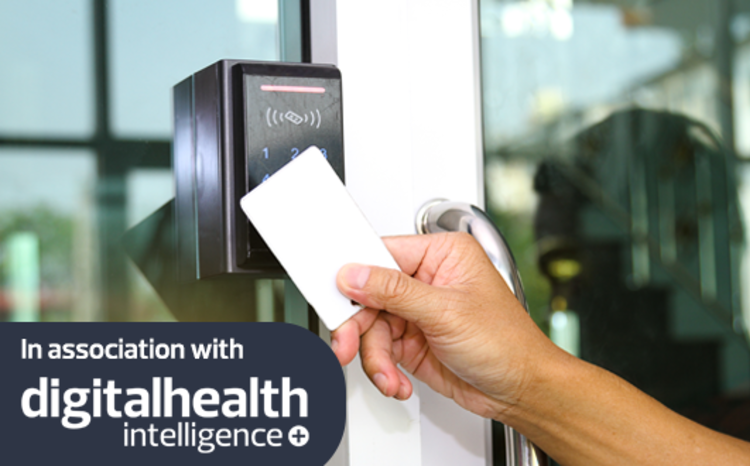Government issues new digital guidance to transform adult social care
- 17 May 2023

Social care employers will be better able to equip their staff with the skills required to benefit from new technologies, enhancing patient care and providing staff with care development opportunities, thanks to new guidance published today.
To complement this, guidance for care providers and local authorities has also been issued, to set a standard for care and support settings when switching to using digital technology, such as virtual 24/7 monitoring centres, to provide quick and instantaneous support.
Developed with support from the Local Government Association (LGA), Association of Directors of Adult Social Services, who are Partners in Care and Health, as well as sector stakeholders, the What Good Looks Like guidance encourages smart foundations and safe practice of technology in care settings so the right technology can be used to benefit local people.
For those working in adult social care, the Digital Skills Framework will provide a structure in which new skills can be developed.
This will ensure innovative technology is being put to the best possible use to enhance care, for example systems that allow a care professional to access a resident’s information from GP records via a digital social care record, to support their care from hospital to home.
Nuno Almeida, CEO and founder of Nourish, one of the first UK digital social care record suppliers to be recognised as an NHS Transformation Directorate Assured Supplier, said the changes would enable providers to improve their services and raise standards across the sector.
The aim is to achieve 80% compliance by March 2024 with a view to records being progressively digitalised. The shift will improve outcomes for those receiving care by minimising safety risks, allowing staff to respond quickly to people’s needs and to share important information quickly and securely.
“At Nourish we’ve long understood the potential positive impact of digital record keeping and how it can help care teams to achieve good outcomes for people receiving care,” he said. “With paper records, people are at the mercy of shift patterns, admin mishaps and other factors. They may not be in a position to, or want to, explain themselves, their medical history, likes, dislikes, etc every time they’re introduced to a new caregiver. With good digital care record software, all that information is available instantly ensuring a continuity of care and seamless handovers.”
Alongside the Digital Skills Framework, guidance for care providers and local authorities has also been published, targeted at those who have a responsibility for digital transformation in local areas – such as digital leads, directors of adult social services, commissioners, and service managers.
Staff will be given training on how to use the technology, which will include virtual care centres – where people drawing on care can access a care worker virtually for help and reassurance 24/7.
This will give those needing care more autonomy and independence in their own homes by eliminating the need for reoccurring or overnight checks.
In some cases, care settings may choose to use the new structure to support staff in implementing new artificial intelligence (AI) monitoring technology, which helps to reduce falls by tracking the movements of those receiving care.
Guidance covers seven key themes
The guidance covers seven key themes including using and managing data, how to use technology for person-centred care and supporting a culture of good practice in using technology for personalised care.
Minister for Care Helen Whately said: “Technology embedded into care and support can be transformative both for people who need care and staff in the sector. Innovative technology in care settings improves care and can increase the time that care workers spend with the people they care for.
“The guidance and standards published today will give social care staff the support they need to improve their digital capabilities.”
Sonia Patel, System CIO at NHS England, added: “This new guidance is a significant step in ensuring our digital ‘north star’ is clear in all health and care settings, helping reduce health inequalities in every community in England.
“We’ve worked closely with social care colleagues to provide the What Good Looks Like guidance for adult social care, building on the framework we’ve already published for ICSs and providers, which we’ll be updating later this year.”
What Good Looks Like gives organisations and local authorities a standard to meet when seeking opportunities to modernise and improve the quality of care in their area through technology interventions such as the Digital Care Record.
The guidance builds on the NHS England What Good Looks Like framework which provides clear guidance across seven success measures for health and care leaders to digitise, connect and transform services safely and securely.
It provides a series of common goals to work towards that will help achieve the vision set out in People at the Heart of Care.
It is an aspirational framework designed to be used by local authorities and care providers of all sizes and types of service, including both Care Quality Commission (CQC) registered and non-registered providers.
Digitising social care is part of the government’s recently published Next Steps to Put People at the Heart of Care plan to reform social care and improve the lives of the 10 million people who draw on, work in or provide, care and support.
Councillor David Fothergill, chair of the LGA’s Community Wellbeing Board, said: “This guidance is designed to support local authorities and care providers of all sizes and types to modernise and improve the way they deliver care, such as expanded social care record systems in their areas.
“Digitising social care is one of the key components of the Partners in Care and Health programme, delivered in partnership by the Local Government Association and Association of Directors of Adult Social Services.
“It aims to help councils to improve the way they deliver adult social care, through developing and sharing best practice, providing support and building connections.”





